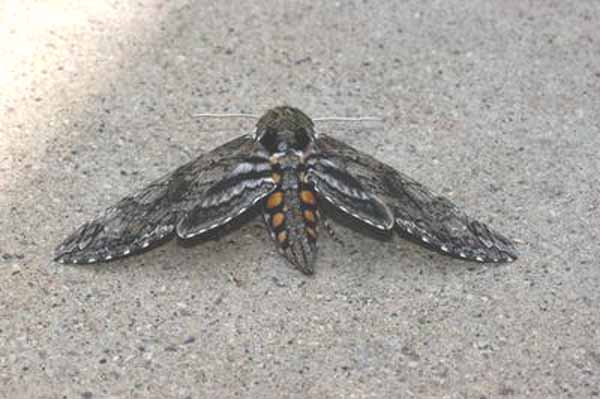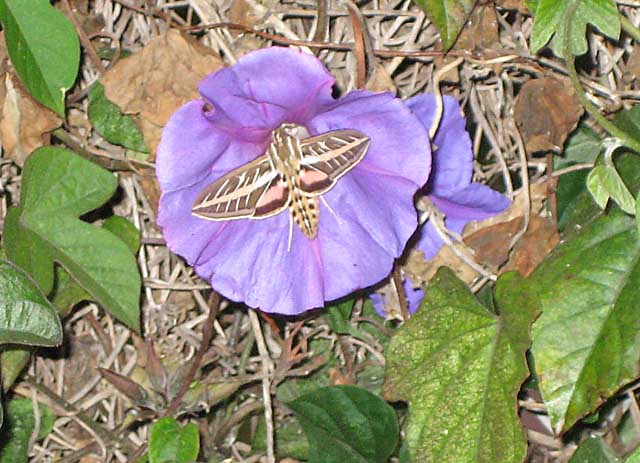San Diego County, California
Sphingidae Adults
Manduca sexta, July 17, 2005, National City, San Diego County, courtesy of Douglas Aguillard.

Manduca sexta, July 17, 2005, National City, San Diego County, courtesy of Douglas Aguillard.
It is hoped that this checklist, with the thumbnails and notes, will help you quickly identify the moths you have encountered.
A WO" after the species name indicates that I have no confirmed reports of these species in San Diego County, but I (William Oehlke) expect that these moths (Sphinx chersis, Eumorpha fasciata (as a stray) and Proserpinus clarkiae may be present.
A USGS indicates the moth is reported on the USGS website and/or in Moths of Western North America, #2. Distribution of Sphingidae of Western North America, revised, an excellent little booklet available through Paul Opler.
This page is inspired by and dedicated to
Doug Aguillard. Doug sent me the image of the
Manduca sexta adult at the top of the page. The larva
feed on tomato foliage, and can probably be found on garden tomatoes
within its range.
A special thanks also goes to Don Doerfler for the following image of
Smerinthus saliceti.

Smerinthus saliceti male, Encinitas, northern/coastal San Diego County, California,
August 21, 2007, 5:00pm, courtesy of Don Doerfler, Digital Camera: Olympus 5060, 8MP
Please help me develop this list with improved, documented accuracy by sending sightings (species, date, location), preferably with an image, via email to Bill Oehlke.
Sphinginae subfamily
Smerinthini Tribe:
Macroglossinae subfamilyDilophonotini Tribe:
Philampelini Tribe:
Macroglossini Tribe:
|

Hyles lineata, April 14, 2008, Imperial Beach, courtesy of Larry Trame.

Hyles lineata, May 18, 2008, Imperial Beach, courtesy of Larry Trame.
"Thanks for looking at these!"
Enjoy some of nature's wonderments, giant silk moth cocoons. These cocoons are for sale winter and fall. Beautiful Saturniidae moths will emerge the following spring and summer. Read Actias luna rearing article. Additional online help available.
Use your browser "Back" button to return to the previous page.
This page is brought to you by Bill Oehlke and the WLSS. Pages are on space rented from Bizland. If you would like to become a "Patron of the Sphingidae Site", contact Bill.
Please send sightings/images to Bill. I will do my best to respond to requests for identification help.
 Show appreciation for this site by clicking on flashing butterfly to the left. The link will take you to a page with links to many insect sites. |